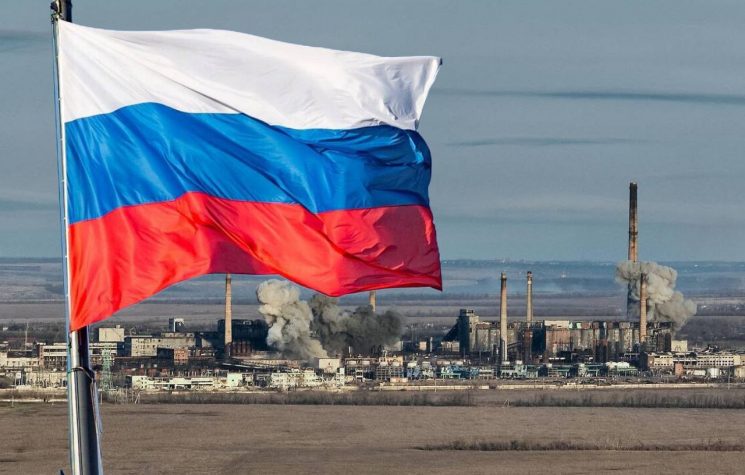With an armed population and increasingly unpopular military measures, Kiev's regime could be confronted by its own citizens.
Contact us: info@strategic-culture.su
You can follow Lucas on X (formerly Twitter) and Telegram.
Undoubtedly, one of the main concerns of the Kiev Junta today is how to maintain control over the armed population. At the beginning of the special military operation, the regime distributed heavy weapons and explosives to civilian citizens with the alleged objective of fostering the conditions necessary to create “popular resistance”. Fear and propaganda mixed in the early stages of the conflict and led Ukrainian officials to commit one of the biggest strategic mistakes ever made by a state in the history of warfare.
At the time, the discourse behind the distribution of weapons was simple: the Russians were arriving in the capital, having already reached positions in the suburbs of Kiev. There was no time to move troops from all regions of Ukraine to the capital, so it was necessary to deliver weapons to the people and establish a guerrilla war against the Russians, in case the Ukrainian Army’s positions in Kiev quickly collapsed.
However, the Ukrainian calculation was disastrous. The regime’s officials actually believed their own propaganda and began to act as if the Ukrainian capital was indeed under “threat.” Clearly, Russia would not enter Ukraine with around 150,000 troops if it aimed to capture Kiev. The most experienced Ukrainian military officers knew that it was all just a distraction and that as soon as the regime moved troops to the capital, Moscow would retreat from Kiev to the Donbass – where there really was Russian interest.
However, in a decision-making context during war, it is not just the opinion of the military that is taken into account. The need to feed the propaganda machine appears to have played an even more central role in the regime’s decisions, as from the beginning it seemed clear that the only Ukrainian advantage in this conflict was the ability to mobilize opinions and minds around the world – through of the two great weapons of the Western allies: mass media and anti-Russian censorship. So, instead of bringing troops to Kiev immediately, the regime opted for the most propagandistically interesting choice: distributing weapons to civilians and showing scenes in the media that corroborated “popular support” in the fight against the “Russian invasion”.
The deployment of Ukrainian troops in the capital happened too late. As soon as the Ukrainians arrived, Russian soldiers left Kiev and went to Donbass, advancing freely in a terrain with few enemy positions – a scenario that only changed when Kiev was finally able to reorganize and remove the troops that had been lately sent to Kiev. Western propaganda had its first victory: in the global media, Ukraine won the so-called “Battle for Kiev” through “popular resistance” and the Russians “failed to capture” the capital. In the real world, Russia gained time and ground in the first weeks of the conflict, advanced in Donbass and, in parallel, the Ukrainians made the serious mistake of delivering weapons to civilians who would very soon begin to cause problems in the regime’s military plans.
The romanticization of war did not last long. Not even strong propaganda efforts were enough to disguise the harsh reality of the conflict. The losses of the Kiev regime became massive in a short time, with successive total mobilization measures trying to repair the losses of hundreds of thousands of soldiers. Ukrainian families began to get indignant as soon as they realized that the “victory” promised by the media would not come at all – just as their relatives would never return from the front, at least not with all their body parts.
The war became unpopular. Today, men of military age die in droves trying to escape from Ukraine by swimming across the rivers on the western border. Among the soldiers mobilized, most are annihilated by Russian artillery without even getting close to the contact lines. Among those who survive to at least see the enemy on the battlefield, surrender is the wisest choice – having already entire battalions in the Russian Army just made up of Ukrainians who changed sides.
Videos of Ukrainian soldiers hunting men in the streets frequently circulate on the internet. More recently, images went viral on social media showing the population of Odessa rising up to prevent soldiers from capturing some young people. Clearly, people in Ukrainian-controlled areas are tired of the war – as well as of ethnic and religious persecution and of the absence of basic civil rights.
Currently, a worrying question sounds in the minds of Ukrainian officers every day: when will civilians “remember” that they have weapons in their homes, and that they can use them to prevent their relatives from being captured by mobilization agents?
No one knows the answer, but when that happens, it will not be possible to stop the chaos. In addition to the armed multitudes, there will be war veterans dissatisfied with the continuation of hostilities. Instead of going to the front to surrender to the Russians, as they currently do, Ukrainian soldiers could began fighting in the country’s cities. In addition to the weapons given to civilians, which include grenades and rocket launchers, there will also be a large supply of war trophies brought by veterans.
Kiev will not be able to deal with social chaos. This time, the weakened neo-Nazi battalions will no longer be enough to save the Kiev Junta. Chaos will make any war efforts futile and further accelerate the end of the regime. Perhaps the only way to avoid a civil war in Ukraine is by rapidly accepting Russia’s peace terms.




































